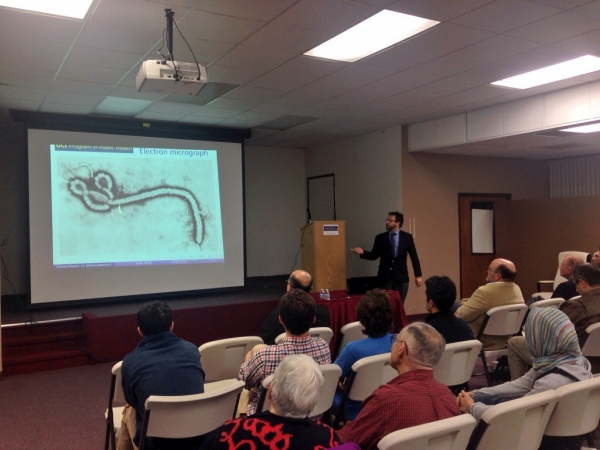On Thursday, December 18, Pacifica Institute hosted a panel, “Ebola: What You Should Know,” featuring Dr. Michael J. Buchmeier, Professor Div. of Infectious Diseases, Dept. of Medicine, Dept. of Molecular Biology and Biochemistry, and Center for Virus Research; and Dr. Andrew Noymer, Associate Professor of the Program in Public Health at UC Irvine.
Dr. Buchmeier explained that Ebola is an infectious disease, but there is nothing mystical about it. It can be treated and cured if it is caught early enough. It is not a death sentence. Out of the 10 cases of Ebola in the United States, only two have died due to the fact that their cases weren’t treated in the early phases of infection.
Though early predictions expected that this outbreak would continue to spiral out of control, recent posts show that the growth is starting to subside. Dr. Buchmeier is confident that within the near future a vaccination will be developed. One is currently being developed by the NIH, and another by NewLink Genetics in Canada.
What makes the outbreak of 2014 so much larger than previous outbreaks is the fact that it struck cities, which due to crowding made it difficult to isolate. The porous borders of West Africa also allowed the infection to spread. In contrast, earlier outbreaks typically occurred in small villages, and thus were easier to contain.
Ebola has a number of symptoms, including coughing, vomiting, headache, and fever. The more symptoms exhibited, the higher the risk of fatality. Fever, malaise, fatigue, and body aches are the first symptoms of infection.
Many of the health care workers treating patients are through volunteer-based organizations like Doctors Without Borders. Managing patients has been a challenge in itself. Given the combination of the hot climate and safety requirements of wearing protective gear, heatlh care workers are only able to wear their suits for forty-five to sixty minutes before they must take it off and rehydrate. They treat thirty to fifty patients within that time, which averages to about one to two minutes per patient. They are only able to do this two to three times a day. The hospitals themselves are not well-developed either. In order to fight Ebola, we must strengthen the health systems in Sub-Saharan Africa.

